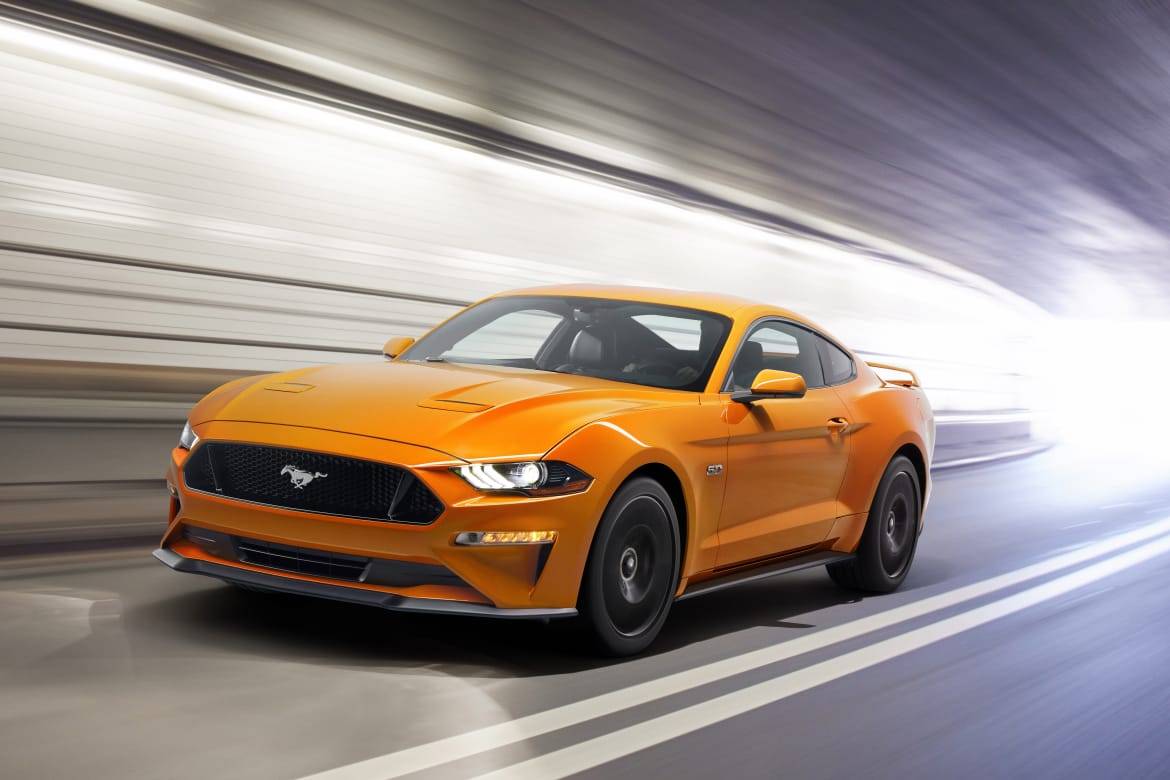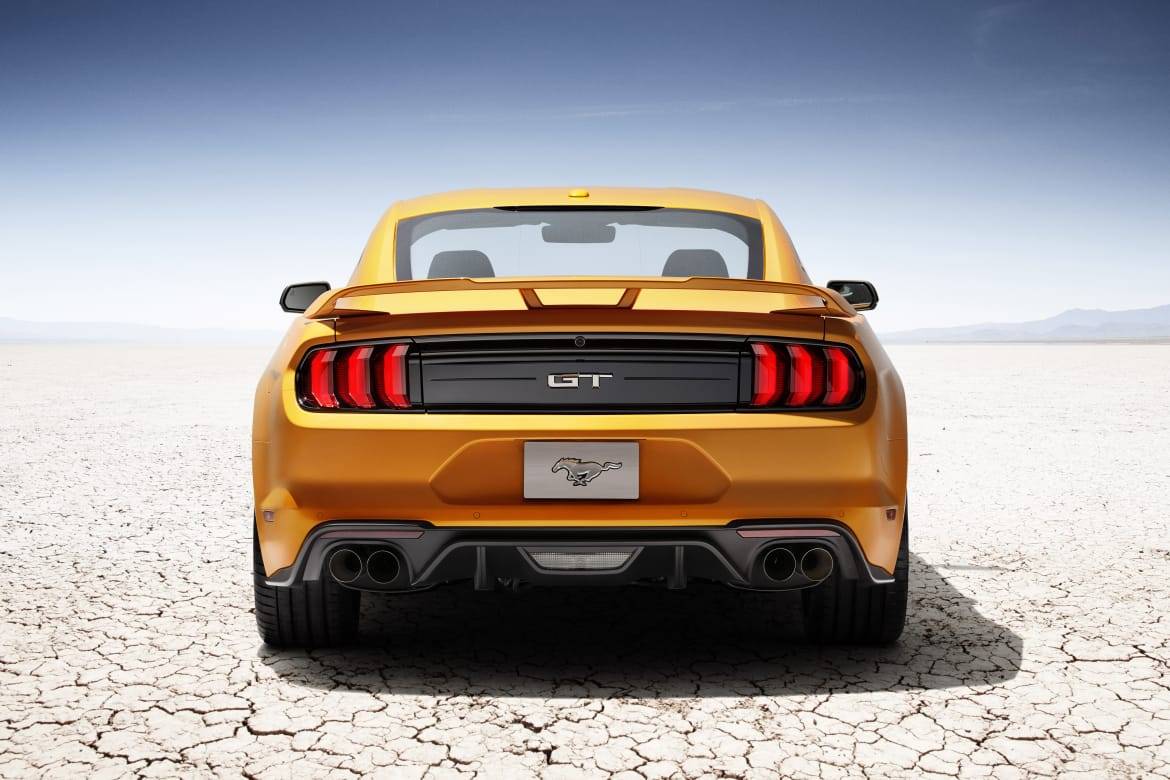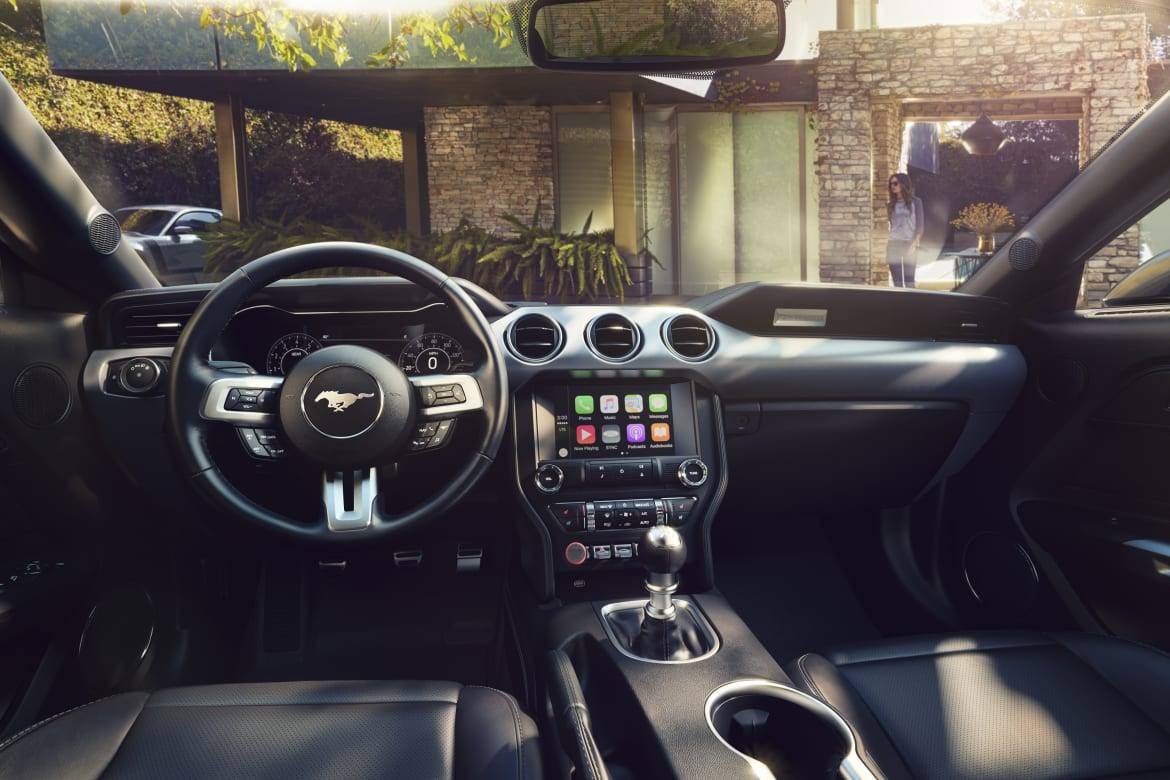2018 Ford Mustang Preview


CARS.COM
Competes with: Chevrolet Camaro, Dodge Challenger
Looks like: The old Mustang with a slight nip/tuck around the edges
Drivetrain: 2.3-liter four-cylinder EcoBoost; 5.0-liter V-8; six-speed manual or 10-speed automatic transmission
Hits dealerships: Fall 2017
Though Ford may sell more trucks than cars these days, no vehicle is more closely tied to the Blue Oval than its pony car — the Mustang. Any updates to the Mustang formula are a big deal for Ford and the sixth-generation Mustang gets a pretty significant refresh.
Related: The V-8 Muscle Car Challenge 2016: Performance
The sixth-generation Mustang debuted in 2015 and in its first update, the changes are quite extensive, especially for GT models. Ford was mum on some of the details, including some powertrain specs, pricing and fuel economy, but representatives said those figures will become available closer to the 2018 Mustang’s arrival at dealerships this fall.
Exterior
Many minor changes were made to the exterior of the 2018 Mustang, but the overall look is still relatively the same. The nose of the hood has been dropped by almost an inch, which makes the front appear sleeker. Additionally, the front end, fenders, grilles and headlights have been tweaked. LED headlamps inside the headlight clusters are now standard, and the LED daytime running lights have been restyled. The foglights also get the LED treatment and now sit a little bit higher.
In the rear, the taillights and lower rear valence have been restyled as well. GT models add a quad exhaust system with four functional tailpipes. The Performance Package also gets a new spoiler, which I saw on the GT model that Ford displayed. It is not subtle, but I thought it was prominent enough to be notable without being garish.
Ford also has expanded the available color and customization options with three new colors (Orange Fury, Kona Blue and Royal Crimson), 10 new wheel designs (12 available wheels in total) and for the first time since 2013 when it appeared on the Boss 302 Mustang, the white racing stripe is back.
Interior
Inside, there are many small incremental updates including new leather for the steering wheel, a new Mustang badge on the dash, new finish for the rings and bezels, and a brushed-aluminum start button that replaces the plastic one.
The more significant updates are on the technology front, with the addition of Sync 3 with Sync Connect and an available new digital instrument cluster with a 12-inch screen.
The digital cluster offers different appearances depending on the Mustang’s drive mode and many customization options are available. In Normal mode, the cluster looks like a standard instrument panel but switch into Sport and things start to change. The tachometer unfurls and wraps around the left side and top of the screen like a candy cane to give the driver a better view of where the Mustang is in the rpm range. Track mode simplifies the screen with a color-coded rpm bar across the top and the speed is displayed in a large, easy-to-read font in the middle.
Ford also expanded the capability of the track lap timer and the quarter-mile timer; the larger screen means it can show the driver the results of the last 12 hot laps or the last set of quarter-mile times with zero-to-60-mph time, reaction time and other information laid out in a table for each run. During the refreshed Mustang’s debut, Ford engineers showed off a screen with a Formula One-style tachometer that moves from green to yellow to red in order to show optimal shift points when on the track.
Drivers also will be able to customize the background colors and layout of the screen, picking elements from different screens to put into a personalized view that they are most comfortable with. These settings will remember preferences for the steering and suspension.
Under the Hood
The Mustang doesn’t get any new engines in this refresh, but the 3.7-liter V-6 has been discontinued. This leaves the turbocharged 2.3-liter four-cylinder EcoBoost and the 5.0-liter V-8 found in GT models, both of which feature mechanical improvements for 2018. The EcoBoost engine has increased torque, while the V-8 adds both horsepower and torque. Internal upgrades to the V-8 include a new port fuel direct injection system, increased compression and an updated intake exhaust manifold.
The six-speed manual transmission also carries over, though for V-8 models it does add a twin-disc clutch and dual-mass flywheel, which allows it to handle the added torque without making the clutch feel too heavy.
On the automatic side of things, there is a new transmission option: Ford’s new 10-speed automatic, which made its debut in the 2017 Ford F-150 Raptor. The 10-speed will be available with both the EcoBoost and V-8 engines and Ford says it will not only shift quicker, but will also improve fuel economy for both engines, though exact EPA figures were not yet available.
There are also suspension updates: All Mustang models add new shock absorbers, a new cross-axis joint in the rear suspension and new stabilizer bars. The Mustang Performance Package also adds an available MagneRide adaptive damping system found previously on the Shelby GT350 Mustang and, perhaps more importantly, on SS versions of the Camaro since 2015.
Also new for 2018 for GT models will be an active valve performance exhaust, which can open up to offer an even more raucous soundtrack when the throttle is pressed down on that big V-8.
The refreshed 2018 Mustang will arrive at dealerships this fall. Ford representatives confirmed that there will be a refreshed version of the convertible as well, but did not say when that body style would go on sale.









Former L.A. Bureau Chief Brian Wong is a California native with a soft spot for convertibles and free parking.
Featured stories








